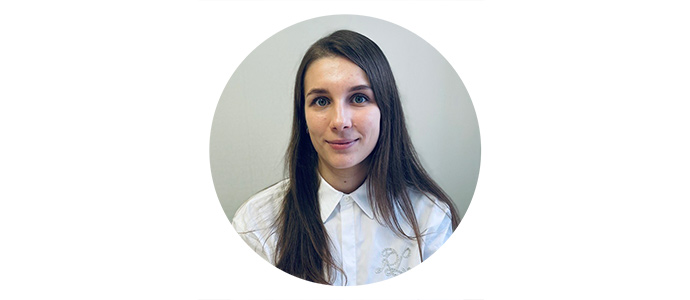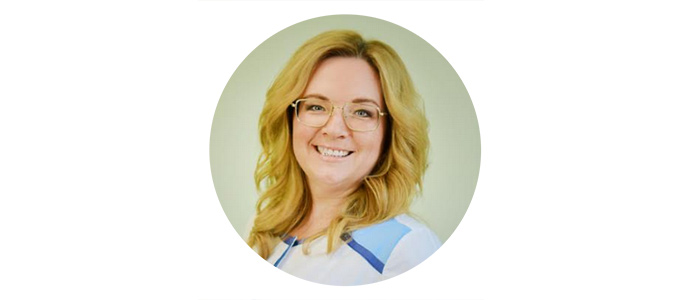Without filing cabinets and statements. Doctor-entrepreneurs share their experience of connecting to the electronic health care system (EHS)
[ad_1]
Ukrainian medicine survived a year of war, survived and continues to develop. This year, the migration of medical institutions to a single digital space – the national electronic health care system (EHS) continues.
To date, about 8,300 health care facilities have already been connected to ESOZ, including both large private medical networks and FOP doctors. In accordance with the Licensing Conditions for Conducting Business Activities in Medical Practice, by the beginning of April 2023, all medical institutions of Ukraine must join the ESOZ: both state-owned, communally owned, and private. The same requirement applies to pharmacies.
Doctors of private medical practice shared with the EP their experience of connecting to the system, life hacks for choosing a medical information system, as well as difficulties and opportunities for development that the EHS opens.
The material on working with the electronic healthcare system was prepared with the support of the Safe, Affordable and Effective Medicines for Ukrainians (SAFEMed) Project.
What is ESO?
The Electronic Health Care System (ECHS) is one of the largest IT systems in Ukraine, in which 35 million Ukrainians are registered and about 400,000 medical and pharmacy workers work.
It is thanks to the ESOZ that a single digital space is being formed in the country – an electronic medical card, in which all information about the patient’s health is stored centrally and securely. In a strategic perspective, this will forever free medical institutions from paper files, and patients from the collection of medical records at home.

Yuliya Vitrova, medical director of the network of medical institutions “Medychna Zirka” LLC:
“In the electronic version, it is more convenient to work, because this way we can see everything created by the institution, by a specific doctor, as well as, in general, all records, prescriptions or referrals for the required period. At the same time, medical information is reliably stored, which is especially relevant during the war. In particular, during military operations, there is a risk of losing medical records. In addition, MIS is constantly being improved: it is possible to work from a smartphone in a mobile application, even if there is no light in the facility.”
Why should private medical institutions become part of the ESOZ

Andriy Dzyoba, director of the Private Polyclinic “ProfiMed”:
“ESHOS was clearly planned as the heart of changes in the health care system. After analyzing all the perspectives of these changes, I realized that work in ESHOS is not just a requirement of the time, or some necessity imposed on us “from above”. I clearly realized, that this is an indispensable way of developing the health care system, a tool without which a medical institution simply cannot function. I realized that one way or another, everyone will be in the EHC, and interaction with various medical services, especially those that depend on the state , will not be possible without ESOZ”.
The use of ESOZ by a private medical institution has a number of advantages:

Complete information about the patient’s health in one place
With the connection of all medical institutions (and other providers of medical services) to the EHR, in the future the patient will always have access to his electronic medical record with a detailed statement, and, with the patient’s consent, every doctor to whom the patient consults.

Modern digital tools for the doctor
Entering data into the system and coding information according to modern international classifiers is simple thanks to templates that are implemented at the level of medical information systems.

Rejection of paper
Keeping electronic medical records and conclusions as opposed to paper forms (medical opinion on temporary incapacity and e-hospital, medical opinion on birth and eMalyatko, COVID-certificates, etc.) significantly saves the doctor’s time for quality communication with the patient.

Reliability and security of medical data
Digital data on the health of patients, which doctors enter into the electronic health care system, are stored on the central (state) component of the system and cannot be changed or deleted without a trace. In case of loss, documents can be restored by using the data in the electronic health care system.

Statistics and management decisions
The analysis of large arrays of data makes it possible to monitor public health indicators, the clinical effectiveness of certain medicines, control the spread of diseases to identify epidemics at the national level, etc.

Larisa Zahurdayeva, head of the obstetrics department of the multidisciplinary medical center “Leleka”:
“Thanks to EHS, we work more efficiently. The fact is that patients remain patients – that is, without professional medical education. So, for example, the collection of anamnesis from the patient’s words can be either excessively detailed or, on the contrary, scanty. Having access to information that was previously entered colleagues, we can get maximum information very quickly and clearly, because we speak the same language. We want access to the complete medical record of the patient – his surgical profile, endocrinological profile, obstetric profile of those women who are not registered in our institution, but came to we exclusively give birth. Also, the patient does not need to run around with paper cards or printouts from different institutions. This is why the inclusion of all medical institutions in a single national system (ESOH) is important.”
How should a private medical institution choose an MIS?
First of all, to register the institution in the ESOZ it is necessary to choose a medical information system (MIS) is a special software for entering and exchanging data in the EHS.
Today, more than 30 medical and pharmacy information systems interact with ESOZ. Each of these MIS has been tested for compliance with technical requirements, is reliably protected and received a certificate of compliance with a comprehensive information protection system (CIS). This means that these systems are protected according to the requirements set by the state.
To choose MIS, it is worth familiarizing yourself with list existing systems, explore the services offered by the developers – both basic (electronic prescription, medical reports on temporary incapacity, etc.) and additional. Read the recommendations for choosing MIS from the Ministry of Health of Ukraine link.

Oleksandr Mohyla, medical director of the “SantaLen” clinic:
“First of all, when choosing an MIS, I recommend paying attention to the work of the MIS support service: to what extent the developer is ready to implement the solutions needed by your institution or to correct errors. This is a key condition for effective interaction and work in the ESOZ. Take into account the needs of your institution and employees – because someone, maybe , accounting functionality is required, others require additional functions for doctors.”
The next step is to learn about the possibility of using the system during the test period in order to evaluate both the functionality of the MIS and the quality of user support.
Larisa Zahurdayeva, head of the obstetrics department of the Leleka multidisciplinary medical center
“An important role is played by the cost of MIS and its maintenance. This factor should be taken into account in accordance with the capabilities of the institution. It is also important to understand whether the developer is ready to be responsible and to be constantly in touch. The fact is that patients do not separate MIS services from the institution in which they receive care. Therefore, the entire responsibility for fast, high-quality and safe data transfer is borne by the medical institution itself. It is important that the MIS provider is aware of this responsibility, which is why we require them to make quick decisions and respond to market needs. If there is no such speed of interaction, a private institution may suffer reputational damage.”
Yuliya Vitrova, medical director of the network of medical institutions “Medychna Zirka” LLC:
“When our institution was just starting to work at the EHOZ, we paid attention to one need, but today we have other priorities. So for us today, it is important to have an application for patients, the possibility of conducting online consultations. It is very convenient when patients, being at across the border, they can freely consult their family doctor. So now I would advise my colleagues to pay attention to the functionality of online consultations and integration. After all, when everything is automated as much as possible, it is possible to effectively save the valuable time of doctors.”
Tips on how to start working at ESOZ
After choosing the MIS, it is necessary to register the institution in the ESOZ.
To register the institution, the head of the medical institution will need:
 active postal address;
active postal address;
 valid electronic signature (KEP) of the legal entity (preferably on a secure medium), basic information about the head of the institution (his passport, individual tax number);
valid electronic signature (KEP) of the legal entity (preferably on a secure medium), basic information about the head of the institution (his passport, individual tax number);
 information about the institution (license for carrying out business activities for medical practice).
information about the institution (license for carrying out business activities for medical practice).
After confirming the establishment’s successful registration, employees of the establishment must register with the ESOZ. In particular, all medical practitioners who keep records defined by legislation, for example, prescribe prescription drugs or form medical opinions on temporary incapacity, must register with the ESOZ.
To learn the basic skills of working with the ESOZ functionality, you can take an online course at the platform of the Academy of the NSZU and medical information systems.
Oleksandr Mohyla, director of the “SantaLen” Clinic
“In the beginning, I personally recorded video instructions for working with the system’s functionality for doctors, separately gathered staff and showed how to work in the system. Each employee was trained differently. Everything is individual: it is enough to show someone one time, and he will understand intuitively, even without watching to the end, and someone needs to be shown 5-6 times. However, the staff changes, and we conduct training for them all the time.”
Yuliya Vitrova, medical director of “Medychna Zirka” LLC:
“When we opened the medical facility, many doctors already had experience working at the ESOZ. In the case that the employee had not previously worked with the ESOZ, 2-3 weeks were enough for him to acquire the necessary skills. Usually, when there is a new employee, for material is prepared for the required module, and later the doctor has the opportunity to contact the contact center of the developer. After all, in the work with the EHS there are specific cases where help is needed. Our MIS is currently finalizing the “laboratory” module, when the nurse will be able to fully enter all tests into the system, which will greatly simplify the work of the doctor. In general, our nurses often help doctors in entering medical records.”
An institution can join the ESOZ without concluding a contract with the National Health Service and without participating in the medical guarantee program. The need to connect to the ESOZ is regulated by Resolution of the Cabinet of Ministers of Ukraine dated March 2, 2016 No. 285 (as amended). It is important that it does not oblige the managers of health care institutions to obtain a new license or to make changes to the existing ones.
Thus, connecting to the EHS not only reduces the burden of the health care institution in terms of paperwork, but also opens up the opportunity for it to provide better quality and patient-oriented services.
[ad_2]
Original Source Link









